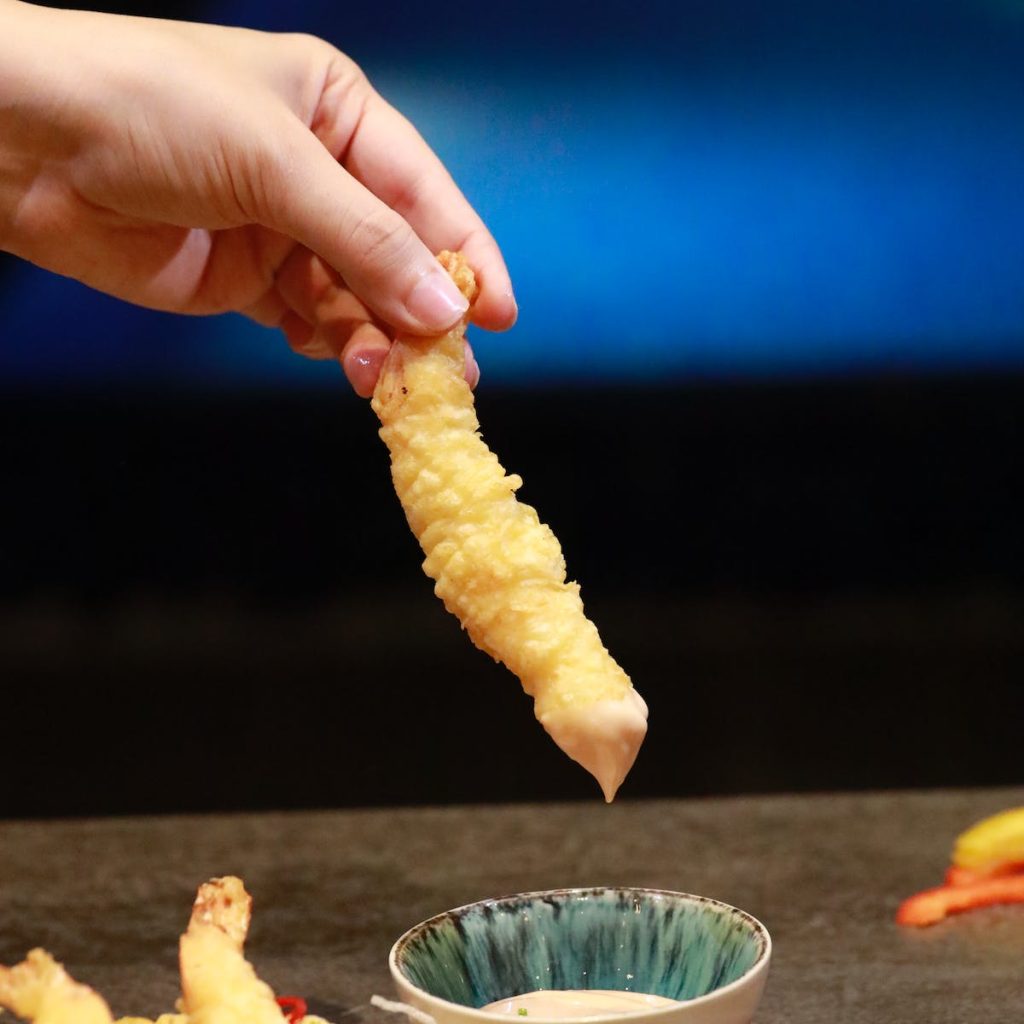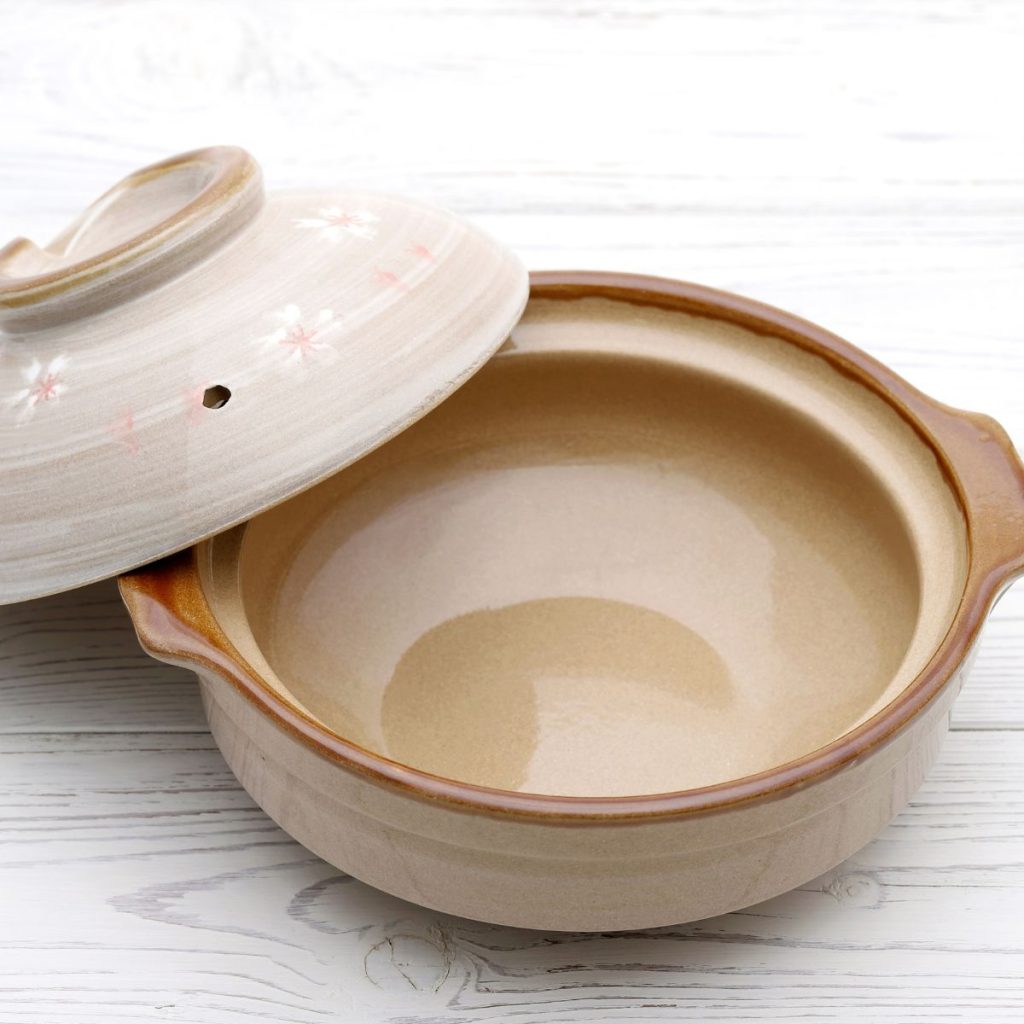Are you ready to take your culinary skills to the next level? In Japan, our food isn’t just dishes; it’s an art, a way of life. Treading the path of this food guide, you’ll experience the heart of Japan through our cuisine.
When you travel Japan, it’s not simply about witnessing the cherry blossoms or hiking Mt. Fuji. It’s about delving into our culture, and Japanese food is an integral part of that journey.
Every region you visit in your Japan travel will unfold a new flavor, a new dish that tells a story. Sushi, ramen, tempura, oh my… so many Japanese foods await you! I assure you, exploring Japanese cuisine is a culinary journey worth taking.
So, hop in and let’s journey together through this extensive palette of tastes that Japanese food has to offer. Begin your adventure with this Japanese Cooking Guide, because the way to a man’s heart is through his stomach… or should I say, his taste buds.
Key Takeaways
- Building Your Pantry: Stock up on essential pantry items like rice, noodles, condiments, and additional ingredients gradually.
- Substitutions for Hard-to-Find Ingredients: Adapt and use available produce or experiment with different proteins for unfamiliar ingredients.
- Meal Planning for Efficiency: Plan meals for the week, create a grocery list, and utilize leftovers for versatile dishes.
- Japanese Cooking Tools and Their Uses: Start with essential tools like rice cooker, frying pans, and pots, and expand based on needs and budget.

An Introduction to Japanese Cuisine
Welcome to the world of Japanese cooking. Let’s start off by saying, isn’t Japanese cuisine fascinating? It’s a symphony of simple, yet sophisticated flavors that truly touch your soul.
In Japanese cookery, respect for ingredients is paramount, and I’m not just talkin’ about sushi. Whether it’s a bowl of comforting ramen or a simple yet fulfilling onigiri, every cuisine recipe weaves a unique tale of its birthplace and people.
Now, when you think Japanese, think beyond sushi and ramen. The Japanese cuisine is much more diverse, featuring an array of regional offerings from Hokkaido to Okinawa.
So, let’s embark on this exciting journey and master Japanese recipes while learning about the culture and history behind them. After all, in the art of Japanese cookery, it’s not just about eating, but experiencing the very essence of Japan.
What Makes Japanese Cuisine Special?
What’s so special about Japanese cuisine, you ask? It’s a symphony of balance, simplicity, and tradition. At its core, Japanese cooking cherishes highlighting the texture and flavor of each ingredient.
That’s why many Japanese dishes are often served fresh, grilled, or lightly simmered. Unlike other cuisines that aim for elaborate presentations, Japanese cuisine’s aesthetics lie in its modest simplicity.
Harmony is key here; the Japanese have a knack for complementing taste with presentation. The warm colors of the dishes, the sound of the food being cooked, even the utensils and dishware used all play a part.
More than just cooking, it’s about crafting an entire sensory experience. So if you’re keen on exploring, Japanese dishes offer an exciting culinary adventure that goes beyond your plate to touch your soul.
The table below provides a glimpse into some popular Japanese dishes and their key characteristics:
| Dish | Description |
|---|---|
| Sushi | Vinegared rice with various toppings |
| Ramen | Noodle soup with flavorful broth and toppings |
| Tempura | Deep-fried seafood or vegetables with a light, crispy batter |
| Yakitori | Grilled skewered chicken with a savory sauce |
| Okonomiyaki | Savory pancake with various ingredients and toppings |
With its unique flavors and meticulous attention to detail, Japanese cuisine offers a truly special dining experience. Now, let’s explore how you can bring the authentic taste of Japanese cuisine to your own kitchen at home.

Japanese Cooking Guide: How to Cook Authentic Japanese Cuisine at Home?
If you’ve ever been intrigued by the wonders of Japanese cuisine, then you’ve come to the right place! Cooking Japanese food at home might be easier than you’d think.
The art of cooking is essential to the Japanese lifestyle and their deep-rooted culture. Heck, it’s a vital part of their identity! But fear not, so you can also cook delicious Japanese meals right in your own kitchen.
Now, you might be asking, “How do I start cooking Japanese food at home?”
First, immerse yourself in understanding Japanese dishes’ harmonious nature. Flavorful yet subtle, complex yet straightforward— that’s the beauty of this cuisine.
Key Ingredients for Japanese Cuisine
To cook authentic Japanese cuisine at home, you’ll need to familiarize yourself with the key ingredients, techniques, and dishes that make this culinary tradition so special.
Building your pantry is essential, including rice, noodles like soba and udon, and condiments like soy sauce, mirin, and miso. If some ingredients are hard to find, don’t worry – adapt and use what’s available.
Plan your meals for the week and create a grocery list based on the menu. Stock up on cooking tools like a rice cooker and frying pans, and master key techniques like knife skills and temperature control.
Some popular dishes to try are sushi, ramen, tempura, yakitori, and okonomiyaki. With practice and patience, you can bring the flavors of Japan to your own kitchen.

Understanding the Fundamentals of Japanese Cuisine
Before diving into the delicious world of Japanese dishes, it’s crucial to grasp the fundamentals of Japanese cuisine. Japan’s cooking culture is deeply rooted in its history and harmoniously tied to the seasons.
The secret to masterful Japanese cooking is understanding the ingredients; each one plays a unique role and adds its distinct flavor. Whether it’s the subtle sweetness of mirin or the pungency of wasabi, every ingredient is incorporated with purpose, painting the comprehensive picture that is Japanese cuisine.
Start with the essence of Japanese cuisine – its ingredients cooking. The simplest dishes can often be the most profound, a testament to Japan’s belief in quality over intricacy.
Take the time to comprehend the basis of the cuisine from the Land of the Rising Sun. This is the key to unlock the treasure trove of Japanese masterpieces waiting to be discovered.
Introduction to Essential Japanese Ingredients
To understand the fundamentals of Japanese cuisine, you’ll need to familiarize yourself with essential Japanese ingredients. Building your pantry is the first step, which includes rice and noodles like soba, udon, and ramen. Essential condiments such as soy sauce, mirin, sake, miso, rice vinegar, and dashi are also must-haves.
Additional pantry items like toasted sesame oil, sesame seeds, Japanese mayonnaise, kombu kelp, shiitake mushrooms, and bonito flakes will elevate your dishes. If you can’t find certain ingredients, don’t worry.
You can adapt and use available produce as substitutes. Vegetarian options like root vegetables, mushrooms, seaweed, tofu, and vegetarian meat alternatives are also available.
Plan your meals for the week and create a grocery list based on the planned menus. Gradually expand your collection of Japanese cooking tools, starting with the essentials like a rice cooker, frying pans, and pots.
With these ingredients, substitutions, and tools, you’ll be well on your way to mastering Japanese cuisine in your own kitchen.

Where to Find Authentic Japanese Ingredients
You can easily find authentic Japanese ingredients for your home cooking at major grocery stores or online if they are not available locally.
These ingredients are essential to understanding the fundamentals of Japanese cuisine and creating authentic dishes. Here is a table that lists some common Japanese ingredients and where you can find them:
| Ingredient | Where to Find |
|---|---|
| Rice | Major grocery stores or online |
| Soba, udon, and ramen noodles | Asian markets or online |
| Soy sauce, mirin, sake | Major grocery stores or online |
| Miso, rice vinegar, dashi | Asian markets or online |
| Toasted sesame oil, sesame seeds, Japanese mayonnaise | Major grocery stores or online |
| Kombu kelp, shiitake mushrooms, bonito flakes | Asian markets or online |
| Tofu, seaweed, green onions | Major grocery stores or online |

Naigating Through Famous Japanese Recipes
Once you’ve dipped your toes into the world of Japanese food, you might find yourself itching to tackle some famous Japanese recipes. So, where should you begin your search? Right here, of course!
Drawing from my deep knowledge of Japan and its cuisine, I’ve made it simple to navigate through the most adored recipes known from our land. From sushi to tempura, ramen to soba, I’ve got a recipe for every craving you might have.
The world of Japanese cuisine can appear daunting, but bear in mind, every expert once started at square one, just like you.
Don’t worry, mate. With patience, practice, and love for the process, you’ll master your favorite recipe sooner than you think! Welcome to the thrilling journey of mastering Asian cuisine.
1. Exploring the Sushi Varieties
As a Japanese cook, it’s always fascinating to guide food lovers through the different sushi types. Discover the wide range of sushi varieties and explore the famous Japanese recipes available to home chefs.
Sushi is a popular dish made with vinegared rice and various toppings. There are different types of sushi, including nigiri (hand-pressed rice with toppings), maki (rolled sushi), and sashimi (thinly sliced raw fish).
Served alongside soy sauce, wasabi, and pickled ginger, sushi commonly features ingredients like tuna, salmon, and shrimp. Mastering sushi at home may feel daunting without a proper guide.
But understanding the fundamentals of Japanese cuisine and knowing the essential Japanese ingredients can simplify it. It can be enjoyed at high-end restaurants or more affordable conveyor belt sushi shops.
2. Ramen
Now, let’s take a view of Ramen, a staple in Japanese food that’s been heartily enjoyed for years. It’s more than just a dish, it’s an art to master.
I’ve got some tips to help you cook this delicious dish at home. Ramen starts and sings its main verse with a rich, flavorful broth, often simmered for hours. The secret, my friends, lies in patience and quality ingredients.
Every topping, from the soft boiled eggs to the tender strips of pork, harmonize like finely tuned instruments. Then, noodles steal the show – springy, chewy, they’re a pleasure to slurp up.
Remember, in Japanese cuisine, every bit of your meal should be an experience, a dialogue between you and the dish. Ramen, like all great Japanese gastronomical tales, tells you its own story each time you dive in.
3. The Tempura Perfection
Now that we’re navigating through famous Japanese recipes, let’s move on to a fan favorite – tempura. “How do I cook it slow, and perfect?” you might ask.
Here’s how to master this technique. Preparing tempura isn’t just about battering and deep frying. It’s an art, learning how to cut the ingredients into perfect strips or pieces, crafting a light, airy batter to coat them, and then frying them to the perfect golden-brown hue.
The tips for getting it right include maintaining the ideal temperature of oil and dipping the ingredients lightly in batter. Always remember, you don’t rush tempura, you go slow, giving it the attention it deserves.
4. The Teriyaki Classics
Teriyaki, oh, how I love it! Now, it might seem daunting to cook, but don’t turn your back on it! With my expert tips and recipes, you’ll be mastering this classic in no time. The key is in the teriyaki sauce, a beautiful blend of soy sauce, mirin, and sugar that creates a sweet and glossy glaze.
Many recipes will have you cooking chicken or fish first, then adding the sauce, but I’m going to let you in on a little secret: marinate your meat in the sauce first. Trust me, your teriyaki dishes will reach a whole new level.
Here are five teriyaki classics that you can easily recreate in your own kitchen:
- Teriyaki Chicken: Tender chicken pieces marinated in a flavorful sauce and grilled or pan-fried to perfection.
- Teriyaki Salmon: Succulent salmon fillets glazed with a sweet and tangy teriyaki sauce and broiled until caramelized.
- Teriyaki Beef: Juicy strips of beef marinated in a savory sauce and stir-fried with vegetables for a quick and satisfying meal.
- Teriyaki Tofu: Firm tofu cubes marinated in a sweet and savory sauce, then pan-fried until golden and caramelized.
- Teriyaki Vegetables: A medley of colorful vegetables coated in a delectable teriyaki sauce and roasted to perfection.
With these teriyaki classics in your repertoire, you’ll be able to create delicious Japanese-inspired dishes that are perfect for any occasion. So get out your apron and start cooking your way to teriyaki perfection!
5. The Donburi Wonders
Donburi is not just your ordinary bowl of rice. It’s wholesome, filled perhaps with grilled eel (unadon), simmered beef (gyudon), or even tuna sashimi (tekka-don).
Now, that’s variety! Donburi recipes are super versatile, fitting right in, whether you’re after something healthy or on a budget. And, did I mention they’re seriously full of flavor?
They really are a complete meal packed in one bowl. Mastering these delectable Donburi recipes calls for a bit of patience, but don’t worry, because as your friendly guide, I’ve got loads of tips to simplify things for you.
The best part? Once you’ve got the basics, you may whip up your own version – feel free to innovate and tickle those taste buds!
6. The Tasty Oyakodon
Let’s talk about a family favorite – the tasty Oyakodon. This comforting bowl of joy comes with a warm story. Oyako translates to ‘parent and child’, signifying the main ingredients – chicken and egg. Now, aren’t those recipes cute?
They’re not just about the eatables, but also about the warmth of family love. Here’s a tip – handle the heat wisely while cooking Oyakodon. A low flame ensures that the egg cooks gently in the simmering broth, keeping it tender and soft.
Pour this over steamy rice and you’ve got a bowl full of love! And remember, the charm is in repeating these recipes until you’ve mastered them. Another round of Oyakodon, anyone?
7. Hot Pot Adventures with Nabe
Next on our culinary tour of Tokyo and beyond, we’re diving into the hearty fare of Nabe. Nabe, or hot pot, is an iconic part of Japanese cuisine, beloved for its simplicity and versatility in cooking. The joy of Nabe lies in its communal nature – think of it as the Japanese version of a cosy, home-cooked stew.
You can throw in a variety of ingredients like meat, veggies, tofu, or anything you like, really. The heart-warming broth doing justice to each note of flavour. Imagining it already?

Konnichiwa! (Hello!) I'm Pat Tokuyama, a Japanese tofu cookbook author, who travels for music, food, and adventure. If you like Japanese tea, checkout some of the newestorganic japanese tea, matcha bowls and noren and more!
** Curious about the Plant Based Japanese Cooking Club? ** Learn more here!
8. Hot Bowl of Miso Soup
Miso soup is a complex blend of miso paste, dashi, and various inclusions, creating a harmony of flavors that is both comforting and nutritious. Indeed, learning the art of miso soup cooking is a must for any Japanese food aficionado.
Now I’m sure you’re asking, “What do I need and how do I begin?” Well, my friends, start with quality miso. Whether you prefer white, red, or somewhere in between, the miso is the soul of your soup.
The cooking process is straightforward, allowing the miso to slowly dissolve into warm dashi, releasing its rich umami essence. And as for your additions, tofu, wakame, or even fresh green onions can make your miso soup unique and personally tailored just to your liking.
Follow these cooking instructions and whisk up a hot bowl of miso soup that is authentically yours.

Essential Kitchen Tools for Japanese Cuisine
To efficiently prepare Japanese cuisine at home, it’s important to have the necessary kitchen tools readily available. Start with the must-have tools, such as a rice cooker for perfectly cooked rice, frying pans for stir-frying and sautéing, and pots for boiling noodles and making soups. These tools are essential for a wide range of Japanese dishes.
It’s also helpful to have good-to-have tools like a wok or large pan for stir-frying and deep-frying, a sushi making kit for creating your own sushi rolls, a donabe (Japanese earthenware pot) for hot pot dishes, and a pressure cooker for saving time on slow-cooked dishes. Consider your personal preferences and budget when choosing between nonstick, stainless steel, or cast iron pans.
Understanding the differences and quirks of your own equipment, such as an electric versus gas stove, will also contribute to your success in the kitchen. Having the right tools will make your Japanese cooking experience more enjoyable and help you create delicious meals to serve to others.
Cooking Japanese Cuisine: A Chef’s Tips
To enhance your Japanese cooking skills at home, you can follow these helpful tips I’ve listed through my experience as a Japanese chef:
- Build a well-stocked pantry with essential Japanese ingredients like rice, noodles, soy sauce, mirin, and miso.
- Learn to substitute hard-to-find ingredients with local produce and alternative proteins.
- Plan your meals for the week and create a grocery list based on your menus.
- Invest in the necessary cooking tools like a rice cooker, frying pans, and pots.
- Master key cooking techniques such as knife skills, temperature control, and flavor balance.
By following these tips, you’ll be well-equipped to create delicious and authentic Japanese dishes in your own kitchen.









Konnichiwa! (Hello!) I'm Pat Tokuyama, a Japanese tofu cookbook author, who travels for music, food, and adventure. If you like Japanese tea, checkout some of the newestorganic japanese tea, matcha bowls and noren and more!
** Curious about the Plant Based Japanese Cooking Club? ** Learn more here!